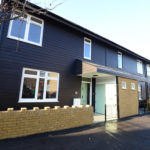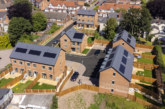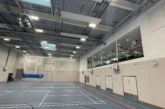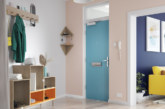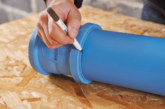Sarah White looks at the latest building innovations available that will not only help improve the quality of new affordable housing developments but also help to extend maintenance cycles and offer greater cost efficiencies, all whilst improving a tenant’s living environment.
Sarah White is Residential Sector Manager at British Gypsum
Header image: Gyproc Habito was specified for a Newham London Borough Council housing development.
A combination of government policy focused on shared ownership, ongoing requirements to cut rents each year and changes to housing benefit has meant the affordable housing sector is under increased financial pressure. For many local authorities and housing associations this has meant looking at ways to reduce costs and find efficiencies in the design, build and, crucially, the maintenance of properties.
Reducing costs is not a simple process and one of the biggest challenges is balancing quality with budgetary restraints. However, taking a long-term approach to the management of properties can help minimise costs. Reducing the number of times that each property has to be refurbished or repaired throughout its lifetime has significant impact on the level of investment required.
An area where this strategy can make a real difference is with the construction and maintenance of internal walls. This is one of the parts of the home that needs to be most resistant to accidental damage — either from knocks and scrapes or even poorly performed attempts at DIY. Improving the durability of the walls and interior finishes can allow social housing providers to extend maintenance cycles and reduce whole life costs significantly.
There are a number of solutions available to help social housing landlords achieve this. For example, there have been substantial advancements in plasterboard technology with products that feature an engineered core now available. These are up to five times stronger than standard products and deliver enhanced levels of strength, durability and versatility.
In addition to the resistance to everyday wear and tear, the strength of the wall means items can be screwed straight into the wall surface, without the need for drills or specialist fixings. Not only does this speed up the construction by making items such as kitchen cupboards and curtain poles easier to fit, it also means that in the longer term, tenants are less likely to accidentally damage the walls with their own DIY attempts. There is also the added benefit that this gives tenants more flexibility in making a house, or apartment their home, with the freedom to easily hang heavy pictures or heavy items for extra storage space to the wall without knock on damage.
Similarly, specially formulated plasters are available that offer up to 60% greater durability compared to standard options. These have been developed specifically for high traffic areas and so also offer long-term resistance to knocks and scrapes, keeping walls looking fresher for longer.
Whole life cost

These products may require a higher initial investment, however upgrading the fabric of the building at the construction stage or during refurbishment means that the properties stay looking newer for longer, reducing repair costs and extending the maintenance cycle. For example, Newham Borough Council specified the use of reinforced plasterboard on a recent new-build social housing development and this has helped the council to reduce maintenance call outs.
When maintenance and repair is required the same balance between quality, cost and speed must be considered. While it can be tempting to use cheap products or carry out a quick fix, it is often costlier in the long-term. The likelihood is that the use of inferior products will see the same issues recurring and so require multiple visits from the maintenance team over a short period of time. Not only does this have a cost in terms of materials and labour time, but it also causes inconvenience for the residents.
Minimising the time required to carry out any repairs will allow the maintenance teams to be more productive while reducing the disruption to residents. By utilising product innovations that shorten preparation or set times while providing a long-lasting repair, social landlords can further reduce budgetary pressures.
For smaller patching and repair jobs, such as filling holes around window and door replacements, shorter set undercoat plasters are ideal. There are products available that offer a reliable 60-minute set time and as such allow patching and repair to be completed in half the time compared to standard plasters without compromising on quality.
High quality finish
For plastering or skimming a painted wall, the traditional approach is to use watered down PVA or a bonding agent, leave it to dry for at least an hour or even overnight and then re-skim the wall. However, there are now solutions available that can be applied straight on to painted walls or even textured ceilings without pre-treatment, providing a smooth, high quality surface. This achieves the same durable base for decorative finishes to be applied to but in fewer steps and requiring less time.
With the budgets of many social housing providers under pressure, reducing costs has become essential. While it can be tempting to select low cost solutions, the use of high-quality products, especially for the interior finishes, can substantially lower maintenance requirements, extending the time between refurbishments and improving a tenant’s living environment.

